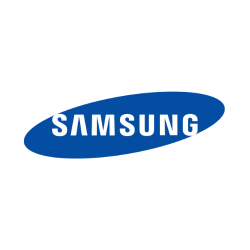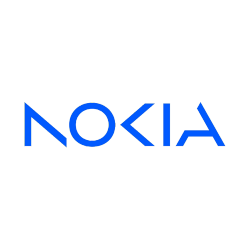
Introduction to XOLO Q900s
The XOLO Q900s is an Android smartphone that was announced in June 2014 and released in July of the same year. Although it has been discontinued, this smartphone still garners attention due to its lightweight design, dual SIM capabilities, and adequate performance characteristics for its time. With its Qualcomm Snapdragon 200 processor and an option to upgrade from Android 4.3 to 4.4.2 KitKat, the XOLO Q900s provided a solid performance experience for average smartphone users back in its release period. It comes with features that were considered competitive during its time of release, including a good camera setup and protective display features.
Design and Build Quality
The XOLO Q900s boasts a compact and lightweight design with dimensions measuring 135.8 x 67.2 x 7.2 mm and a weight of just 100 grams. This made the device one of the lightest smartphones in its category, easily portable and comfortable to handle. The dual SIM feature allows users to operate two SIM cards simultaneously, making it convenient for managing personal and professional contacts separately. The sleek profile and minimalistic design are complemented by a choice of black and white color options, offering a classic aesthetic to suit varying user preferences.
Display Features
Equipped with a 4.7-inch IPS LCD screen, the XOLO Q900s offers a resolution of 540 x 960 pixels with a pixel density of around 234 pixels per inch. While not on par with modern high-definition displays, the screen provided clear and vibrant visuals at the time. The use of Asahi Dragontrail Glass for protection adds durability against scratches and minor impacts, ensuring longevity and a maintained appearance over regular usage.
Performance
Under the hood, the XOLO Q900s is powered by a Qualcomm MSM8212 Snapdragon 200 chipset, with a quad-core 1.2 GHz Cortex-A7 CPU and Adreno 302 GPU. While these specifications may seem modest by today's standards, they offered a balanced performance for common tasks like browsing, social media usage, and running simple applications when the phone was released. The device comes with 1GB RAM which, although limited, was sufficient for basic multitasking needs back then.
Operating System and Software
The XOLO Q900s initially shipped with Android 4.3 Jelly Bean but could be upgraded to Android 4.4.2 KitKat. This version of the operating system introduced several usability improvements including a more intuitive interface, better memory management, and the addition of immersive mode. Such features improved the overall user experience, aligning the phone's capabilities more closely with user expectations during that period.
Camera
The photography capabilities of the XOLO Q900s include an 8 MP rear camera with autofocus and LED flash features, as well as panorama support. These features made it possible for users to capture decent quality images in varying lighting conditions. Video recording is also supported, enhancing the phone’s utility for multimedia content capture. Additionally, the front-facing 2 MP camera allowed for basic selfie captures and video calls.
Storage and Memory
The device is equipped with 8GB of internal storage, suitable for installing apps and storing media files like photos and videos. Furthermore, storage is expandable via a microSDHC card slot, providing users with the flexibility to increase storage capacity based on their needs. The inclusion of only 1GB RAM may limit the device’s prowess in handling intensive applications, but it served well for standard uses at the time.
Battery Life
The XOLO Q900s is powered by a removable 1800 mAh Li-Po battery. Despite its modest capacity by modern standards, the battery offers respectable standby and talk times - up to 263 hours on 2G and up to 246 hours on 3G standby, with talk time extending up to 23 hours on 2G and up to 14 hours on 3G networks. This ensures a suitable level of device uptime to meet daily usage requirements.
Connectivity Options
For connectivity, the XOLO Q900s includes options such as Wi-Fi 802.11 b/g/n with hotspot capabilities, Bluetooth 4.0, GPS, and a microUSB 2.0 port. Also included is an FM radio feature, appealing to users who enjoy listening to music and news on the go without utilizing data. However, it lacks NFC capabilities which were more of a premium feature back in its release timeline.
Additional Features
The smartphone includes sensors such as an accelerometer, proximity sensor, and compass. These sensors enable enhanced usability experiences like automatic screen orientation adjustment and more interactive app functionalities. The presence of a 3.5mm headphone jack is notable, allowing users easy access to wired audio connectivity.
Conclusion
In conclusion, the XOLO Q900s was a balanced smartphone offering during its time, appealing to users looking for a lightweight design combined with practical dual SIM functionality. Its camera capabilities, adequate processing power for everyday tasks, and competitive pricing made it a favorable choice for budget-conscious consumers in 2014. Despite its discontinuation, it serves as a testament to XOLO’s attempt to offer value-packed smartphone solutions within constrained budget categories.
Key Features of XOLO Q900s
- Lightweight design at only 100 grams
- Slim profile with a thickness of 7.2 mm
- Dual SIM capability for flexible communication
- Corning Asahi Dragontrail Glass for screen protection
- 4.7-inch IPS LCD display with decent resolution (540 x 960 pixels)
- Expandable storage via microSDHC card slot
- Quad-core 1.2 GHz Cortex-A7 processor
- Upgradable Android OS from 4.3 Jelly Bean to 4.4.2 KitKat
- 8 MP main camera with LED flash and panorama features
- Supports LTE connectivity (HSPA 42.2/5.76 Mbps)
- FM radio feature for entertainment
- GPS capability for navigation
- removable 1800 mAh Li-Po battery
- Available in two colors: Black and White
Disadvantages of XOLO Q900s
- Limited 3G network support only (No 4G LTE).
- Outdated Android OS that is only upgradable to KitKat 4.4.2.
- Low display resolution (540 x 960 pixels) resulting in a below-average pixel density (~234 ppi).
- Entry-level Snapdragon 200 chipset which may hinder performance in demanding applications.
- Limited internal storage of 8GB, which may require frequent storage management.
- Modest camera capabilities with an 8 MP rear and 2 MP front camera.
- No NFC support for modern connectivity options.
- Relatively low battery capacity (1800 mAh), which may require frequent charging.
- The device has been discontinued, limiting support and official repairs.

View Also
More Phones
All Rights Reserved +14041 Phones © Mobilawy 2025

























